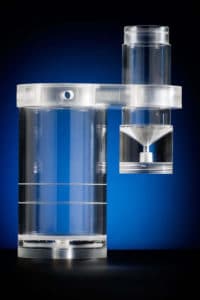
When it comes to achieving cosmetic standards for plastic parts, CNC machining provides the most consistent, high-quality finishes and tight tolerances. Injection molding and additive machining (3D printing) are prone to certain cosmetic defects that can mar the appearance, fit, and function of plastic parts. Secondary CNC machining, however, can remove these defects and bring parts into compliance.
Cosmetic standards for plastic parts are broken down into 5 different grade levels:
Each grade has specific standards and allowances for defects. For example, Grade 1 parts cannot have scratches greater than 0.100” on the top/most often viewed side of the part, and no more than one scratch per 4”x4”. Grade 2 parts, on the other hand, can have scratches no greater than 0.200” on the top/most often viewed side of the part, and no more than two scratches per 4”x4”. Both grades, however, cannot have flash (excessive plastic found at edges where the mold comes together) greater than 0.005 or display any pitting (crater-like holes on the surface of the part).
Injection molded parts are prone to cosmetic defects such as:
3D printed parts have a unique set of cosmetic defects, including:
As an expert in CNC services for nearly four decades, we often provide secondary operations to correct cosmetic defects in injection molded or 3D-printed parts and get them to hold tight tolerances. If your plastic parts require smooth finishes and close tolerances, call us today at 610-926-3245 to start talking solutions.